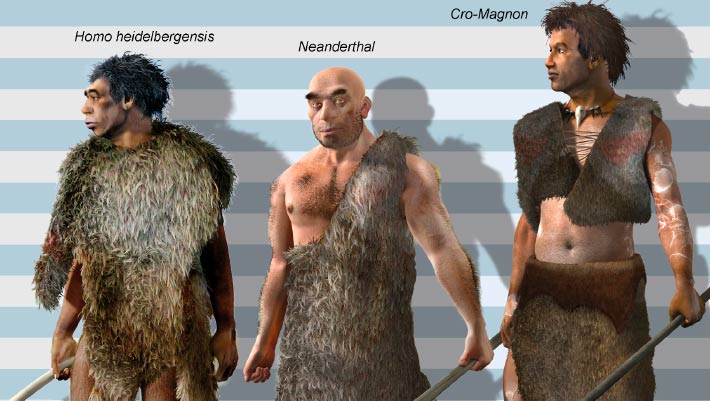Most of his/her fossils have been found in Europe: Who is Homo Heidelbergensis?
Homo heidelbergensis is an extinct human (Homo) species that lived in the Pleistocene. Its remains were first discovered in 1907 with jawbones in a quarry near Heidelberg. Although the jaw found has small teeth like modern humans, its jawbones are wide and heavy, unlike modern humans.

The Homo heidelbergensis species lived between 600,000 and 300,000 years ago, but fossils from Gran Dolina Spain dating back 800,000 years ago may belong to Homo heidelbergensis or a different species, Homo antecessor.
Most of the fossils known today as Homo heidelbergensis were identified in the past as Homo erectus, Homo neandertalensis or Archaic sapiens, but are now known to belong to Homo heidelbergensis.
Its existence has been determined from fossil fragments found in Africa and Europe. It was first discovered by Otto Schoetensack in 1908 from a jawbone found in the Grafenrain sand quarry in the Mauer region near Heidelberg, Germany, and was named that way because of its location.
Homo heidelbergensis (also H. erectus heidelbergensis, H. sapiens heidelbergensis) is an extinct species or subspecies of archaic human which existed during the Middle Pleistocene. It was subsumed as a subspecies of H. erectus in 1950 as H. e. heidelbergensis, but towards the end of the century, it was more widely classified as its own species. It is debated whether or not to constrain H. heidelbergensis to only Europe or to also include African and Asian specimens, and this is further confounded by the type specimen (Mauer 1) being a jawbone, because jawbones feature few diagnostic traits and are generally missing among Middle Pleistocene specimens. Thus, it is debated if some of these specimens could be split off into their own species or a subspecies of H. erectus. Because the classification is so disputed, the Middle Pleistocene is often called the "muddle in the middle".
Most of the Homo heidelbergensis fossils have been found in Europe, but fossils proving its existence have also been found in Africa and Asia. Fossils found in Africa belonging to either Homo heidelbergensis or a relative of it are also called Homo rhodesiensis.
The place of hominid species in the family tree has not yet been determined with certainty. There are also those who argue that Homo Heidelbergensis is the common ancestor of Homo Sapiens and Neanderthals in Europe. It is assumed that it is a relative of Homo erectus.
It is assumed that Homo Heidelbergensis was a relatively intelligent species, able to use some tools and socially cooperate.
On May 26, 1994, a fossil shin bone belonging to the species Homo heidelbergensis was found in Boxgrove. He was called Roger after the explorer Roger Pedersen. Roger became famous as the oldest known Briton ever known in history. Two teeth found in 1995 proved that Roger was Homo heidelbergensis. Roger, possibly a man, was in his 40s, stood 1.80 cm tall, and weighed 90 kilos.
